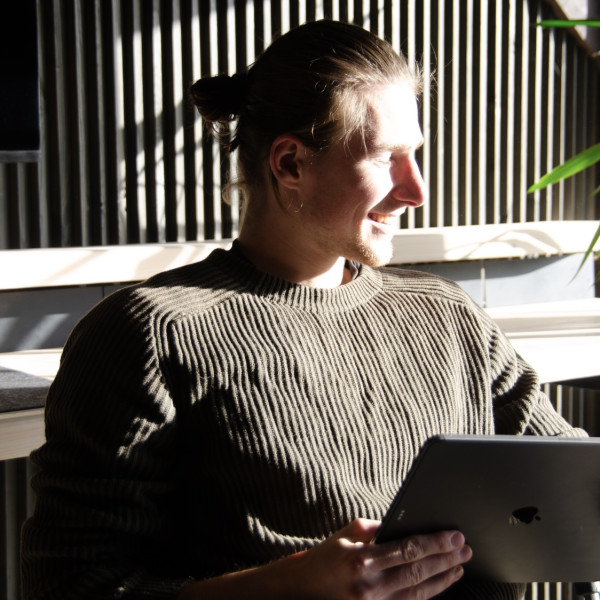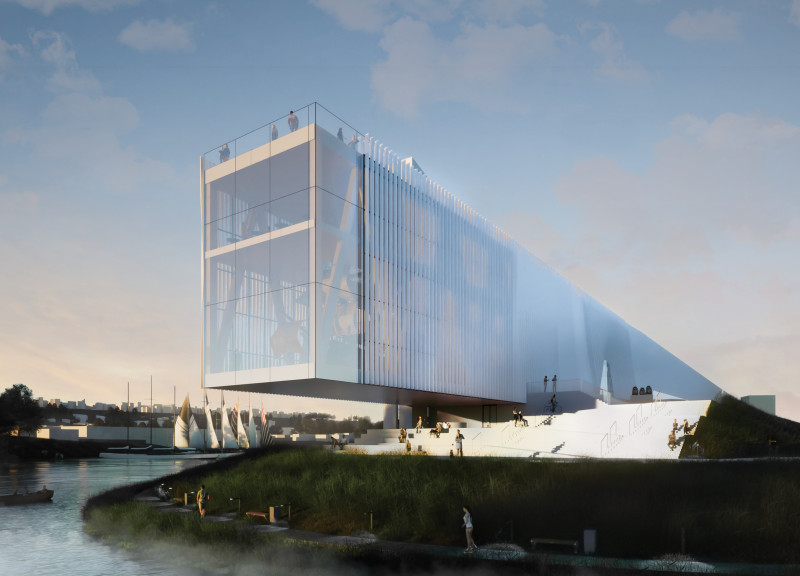5 key facts about this project
At its core, this design serves multiple purposes, adeptly catering to the requirements of both private and communal spaces. The layout encourages interaction and flexibility, demonstrating an understanding of modern living and working dynamics. Significant attention has been given to the flow of spaces, where each area is purposefully designed to offer comfort and utility. The strategic arrangement of rooms ensures that natural light permeates deep into the interior, effectively reducing the reliance on artificial lighting and enhancing the overall wellbeing of its occupants.
The project showcases a distinctive architectural language, characterized by clean lines and thoughtful proportions. Its facade utilizes a blend of materials that not only contribute to the visual appeal but also to the building's performance. Predominantly, the design incorporates materials such as reinforced concrete, timber cladding, glass, and steel. The use of reinforced concrete provides a robust structural foundation, while timber cladding adds warmth and a sense of connection to nature, reflecting a growing trend in sustainable architecture. The extensive use of glass amplifies the sense of openness, allowing for transparency between indoor and outdoor spaces and offering unobstructed views of the surrounding landscape.
The architectural integration of outdoor spaces complements the overall design ethos, seamlessly blending the building with its environment. Terraces, balconies, and garden areas are thoughtfully incorporated, fostering a connection to nature that is increasingly essential in contemporary architecture. These spaces encourage outdoor activities and social gatherings, thereby reinforcing community ties. Sustainable landscaping principles have been applied, employing native plant species that require minimal maintenance and provide habitat for local wildlife.
One of the unique design approaches of this project is its commitment to sustainability. Beyond the careful selection of environmentally friendly materials, the design incorporates renewable energy technologies, such as solar panels and rainwater harvesting systems. This proactive approach reduces the building's ecological footprint, making it a responsible choice in an era where sustainability is a critical consideration in architectural design. The project's design philosophy emphasizes longevity and adaptability, allowing for future modifications without compromising the integrity of the original structure.
Technical details further exhibit the precision and thoughtfulness of the design. The architectural plans are meticulously crafted, showcasing areas of circulation, utility, and personalized spaces. Architectural sections reveal the verticality of the design, highlighting how different levels interact and contribute to a cohesive whole. These elements not only serve functional purposes but also express the architectural narrative, portraying the relationship between the interior and exterior environments.
The conceptual framework guiding this project is rooted in the ideals of community engagement and user-centric design. It serves as a testament to the potential of architecture to foster social connections and enhance the quality of life for its occupants. Through careful planning, the project strikes a balance between aesthetic beauty and pragmatic functionality.
For those interested in exploring this architectural endeavor further, reviewing the architectural plans, sections, and design ideas will provide deeper insights into the innovative thinking and strategic approaches employed in this project. Engaging with these materials will allow readers to appreciate the comprehensive vision that has shaped this unique architectural design.


 Ignas Arlauskas
Ignas Arlauskas 




















